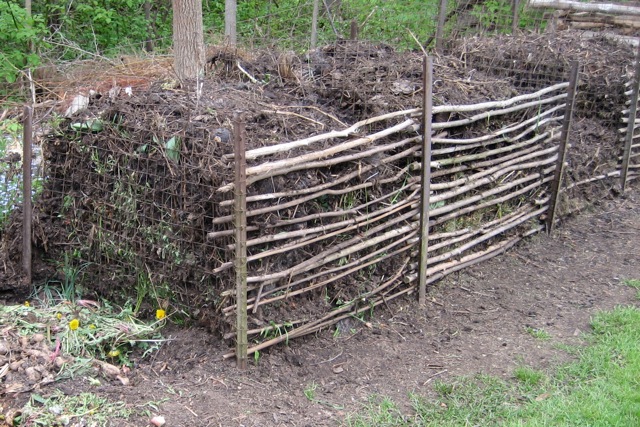How Does Your Garden Grow?
Creating your first vegetable garden can seem like a daunting task. Here’s a beginner’s guide to choosing the right spot, the top crops and enjoying the fruits (well, vegetables) of your labour.
Growing up in North York, Julia Dimakos says she remembers her yard had “maybe had a few tulips.” As an adult she had no gardening experience and had never considered growing her own food – until she and her husband left their downtown Toronto condo in 2006 and moved to Shelburne to start a family. When their second child was born four years later, Dimakos started to pay more attention to the food they were eating. “I wanted to feed my kids organic foods and understand where it came from,” she says.
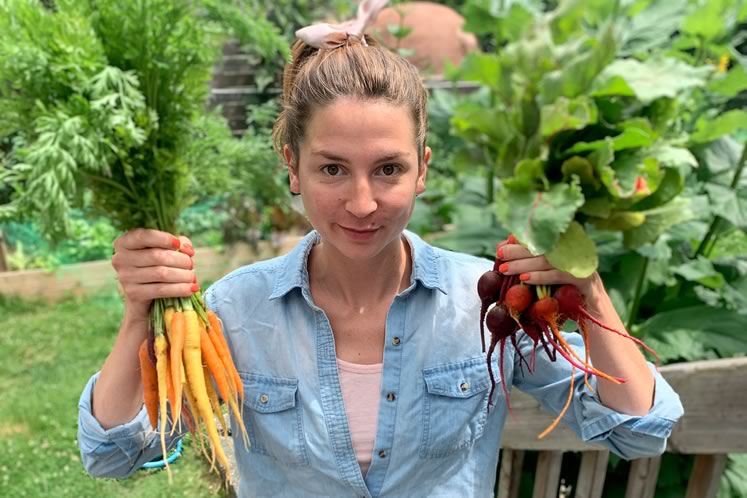
Amateur gardener Emily Quinton grows vegetables in her backyard and in the Alton Village Square community garden. Photo courtesy Emily Quinton.
It was a visit to the parents of her children’s nanny that proved to be the push Dimakos needed to get her hands dirty and try vegetable gardening. The parents’ 300-acre property in Grey County included a simple farm garden – no fancy planters or raised beds, just rows in a field. “I stayed for dinner and everything we ate was fresh from the garden – it was so delicious. In that moment, I fell completely in love with the idea of growing my own food.”
Back home (and with a later gift of llama manure compost from her nanny’s parents), Dimakos started small, eventually installing a 4-by-16-foot raised garden bed on the south side of her home. “I took courses and spent tons of time researching and planning,” she says. “I can’t tell you how exciting and rewarding it was for me to see food come up from the ground, produced from the tiniest little seed that I planted.”
Dimakos and her family have since moved to a 24-acre property in Mono and she’s upped her game to a 7,000-square-foot formal potager of raised beds, pathways, and fencing to keep the deer out. She starts plants in her greenhouse in March and produces food from early spring through November.
Her zeal for growing has also resulted in a new career as a gardening expert, speaker and writer. She shares gardening hacks and experiments with her 17,000-plus Instagram followers, offers inexpensive tools such as seed starting and outdoor planting calculators on her website, and is a brand ambassador for a seed company and a local worm manure company.
Dimakos says she has seen a dramatic uptick in new gardeners since the beginning of the pandemic. “Seed companies were completely sold out of everything, and it was difficult to get wood, tools and supplies because everyone wanted a garden. So many people fell in love with growing their own food and the idea of having something so safe and self-sufficient in their lives.”
Dimakos’ trajectory over the last decade is proof positive that novices needn’t be intimidated by vegetable gardening. We asked her and others for their best advice on the basics of getting started.
Location, location, location
Before you start digging, experts agree sunshine and water top the list, so choose your location with those in mind. Most vegetables need at least six hours of direct sunlight a day, or more if possible, says Mark Gorski, owner of Erin-based Gourmet Garden Organics. “I prioritize morning sun because it will dry up any dew and minimize the risk of fungal plant disease.”
At the same time, for watering, you don’t want to be too far from an outdoor tap. Gorski, whose business is focused on creating and maintaining custom vegetable gardens, says that usually means having a garden close to the house – where easy proximity to your kitchen is also a plus. “When food starts coming in, you will begin planning your meals around what foods you must use from the garden, rather than what you need to buy.”
Gorski is an advocate of timed sprinklers and drip irrigation systems, but for small beginner gardens he recommends using a watering can with a long neck to reach under leaves to the base of the plants.
Size and style
Once you have a general idea of where to lay down roots and where your water will come from, it’s time to map out the plot. Experts advise starting small – as small as growing a few herbs and tomatoes in pots on your patio, which many seasoned veggie gardeners will tell you is how they got started.
When you are ready to commit, Gorski recommends raised beds because they give you the best control over the environment, most importantly the soil you start with. (Raised beds are also a bit friendlier on the back and offer an easy perch.)
In a controlled environment you’ll have fewer weeds, Gorski says. So instead of weeding you’ll have more time for harvesting, pruning and replanting. “If you give your garden the full attention it needs, it will naturally prosper and your yield per square foot will be noticeably more.” And he offers other clever ways to use every inch. Building a trellis at one end will keep climbing tomatoes or beans out of other vegetables’ airspace. Crops can trail over the edge of a box – zucchinis, for instance, can rest on the ground outside the box.
Easy raised beds kits are available to purchase, but if you’re framing your own, the design can be simple and straightforward. Gorski advises going no wider than four feet, so you can always reach the centre. Lengths beyond 10 feet will likely require cross-bracing if you want them to last. If your budget and motivation allow, he says two 4-by-8-foot beds provide space for enough variety and volume to “make a meal out of it.”
Gorski recommends using two-by-eight cedar boards. Cedar is rot resistant and will last longer than standard construction lumber. Aim for a depth of 10 to 16 inches – deeper if you are installing in an area that has minimal existing soil depth. If you line the bottom to block weeds, don’t use landscape fabric. It will block vegetable roots from fully growing down and out, he says, and it gets stringy and messy as it breaks down. “I like to use kraft paper, which is not only highly effective, but also decomposes naturally.”
If you don’t want raised beds and are starting a new garden, or rehabilitating a fallow one, plan on deep digging to remove as much of the grass and weed root mass as possible. Then layer in fresh soil and composted manure without mixing it in. (Think a layer cake, not a well-mixed batter.) “This will limit competition between your vegetable seeds and existing weed seeds present in the original soil,” says Gorski.
Similar layering is also at the heart of what’s called no-dig, sheet-composting or “lasagna” gardening. It involves laying down a layer of damp cardboard, leaves or newspaper directly on top of a lawn or an old garden before adding layers of soil and compost. Check out instruction videos online if you’re curious.
A word on soil
Dumping a heap of topsoil into your vegetable garden is not how it’s done. You need to use proper gardening soil that contains nutrient-dense organic matter such as compost and manure. “I generally avoid bagged soil and instead buy it in bulk by the cubic yard, which means you can then create the perfect garden mix,” Gorski says.
Ask your garden centre what kind of soil they supply and whether there’s compost mixed in. If not, you can ask them to add it to your order. “Using the proper soil will set your garden up for growth success and eliminate excessive weeds,” says Gorski.
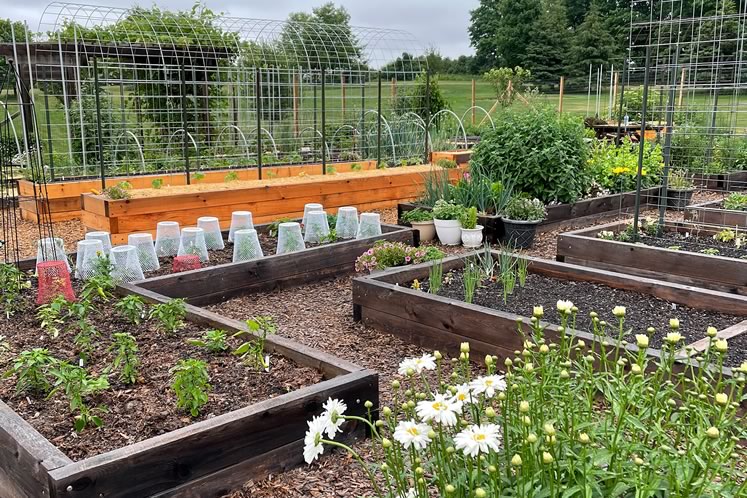
Gardening expert Julia Dimakos’s Mono garden features a formal design, walkways and raised beds – and simple mesh wastebaskets she uses to protect her seedlings from squirrels. Photo courtesy Julia Dimakos.
Dimakos agrees that asking about the source of your soil is crucial; she’s had bad experiences with soil and compost deliveries that contain bits of garbage that hadn’t been properly screened out. (She notes that bagged soil is fine for small gardens and pots.) And though you may have heard chatter about testing pH levels and mineral content of your soil, it’s not often required. “You only need to test if you are growing something specific that requires acidic soil, like blueberries,” she says.
After you add soil, top dress it with composted manure (sheep manure is common at garden centres) to keep nutrient levels up. This can be done in the fall or spring. If you have space, think about starting your own loose compost pile immediately, using plant material, kitchen scraps – no oils, meat or dairy because they attract critters – and paper products. If you want to include a wider variety of food waste, Dimakos suggests buying a sealed compost tumbler. This will also speed up the process due to its ability to hold heat.
If you want to know more about soil specifics, study up. Owen Goltz and Susan Graham of Riverdale Farm and Forest in Inglewood – a community farm which sells fresh produce onsite from May to December – are champions of sustainable farming and are among those who offer classes and workshops for home gardeners. Theirs cover the relationship between photosynthesis, soil microbes and soil nutrients; the dos and don’ts of tillage; soil remineralization; and compost basics. “Each one of these is an important aspect of growing food and they’re interconnected with each other,” says Goltz.
Pick your vegetables
Deciding what you want to plant is easy: Grow what you know you love and will use. “This may sound obvious, but in my first year of vegetable gardening I learned that I like the way many things look, like rainbow chard, but actually don’t love eating them,” says Emily Quinton, an avid food grower and a garden care volunteer at the Alton Village Square community garden. “I love peas and carrots, so I grow lots of those throughout the season.”
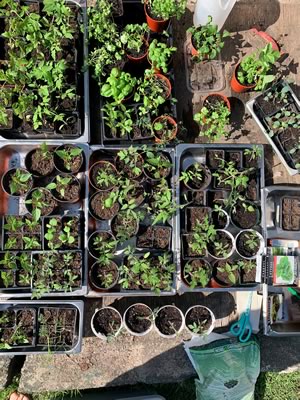
A collection of Emily Quinton’s spring seedlings before they’re planted in her raised garden beds or in Alton’s community garden. Photo courtesy Emily Quinton.
Quinton, who maintains three 3-by-6-foot raised beds at her home in Alton, says the beginner crops she recommends are popular, fast growing and resilient – such as radishes, lettuces, peas and kale. She notes these are also good vegetables to plant from seed. More delicate heat-loving plants such as tomatoes, eggplants and peppers are best planted as seedlings to give them a head start. All are also smart choices for novices because they tend to be compact, easy growers.
How to avoid too much of one crop or crops that mature all at once are topics running through the coaching and workshops of commercial farmer Jamie Richards of Mono’s Am Braigh Farm. One approach he takes with folks just starting out is to help them create a “backward design.” Gardeners identify what they want out of their garden, and he works backward with them to achieve it over the course of the entire season. Building on this, like other experts, he shares the gospel of succession planting.
Quinton says this is a topic that can “sound a lot more intimidating than it really is. What it means is refreshing what you plant in your garden to ensure you have some core favourites growing all season. Salad greens, herbs, carrots, beans and peas can be planted multiple times throughout the spring, summer and early fall – as often as every two or three weeks.”
As for when to plant, in a mild spring you may be able to get a few cool-season vegetables like spinach, arugula, onions and collards into the ground as early as April, says Quinton. As the days warm into May, finish putting in the rest of your first seeds and seedlings. Your seed packets will include detailed instructions. If seedlings don’t come with any growing information, ask an expert at the garden centre where you buy them.
You might want to plot it all out on paper with an eye to the ideal spacing requirements for each plant. The standard garden spacing scale ranges from extra small (imagine 16 plants or seeds in four rows of four per square foot) for compact veggies like radishes and carrots to extra large (one plant per four square feet) for summer squash and zucchini.
Maintenance
Sorry, there’s no resting on your laurels now. For a small new garden, Gorski says plan to spend time watering almost daily, and at least two to four hours a week on weeding, pruning and pulling plants that have finished their production cycle.
To help cut down on weeding time, Dimakos recommends mulching with chopped leaves or straw. “Put it down around young plants right away so no unwanted growth can establish itself. In garden beds I use mulch not just to prevent weeds, but also moisture loss.” (A bonus of leaf mulch: You can eventually work it in to augment the soil, says Dimakos.)
You may also have to do battle with natural garden pests. Gorski removes bugs and slugs by hand and puts them in a bucket of soapy water. Chipmunks, rabbits and deer are also first-class enemies. Try companion planting marigolds on the perimeter of your garden as well as between rows of veggies to ward off rodents and insects. Fencing is the best way to dissuade deer.
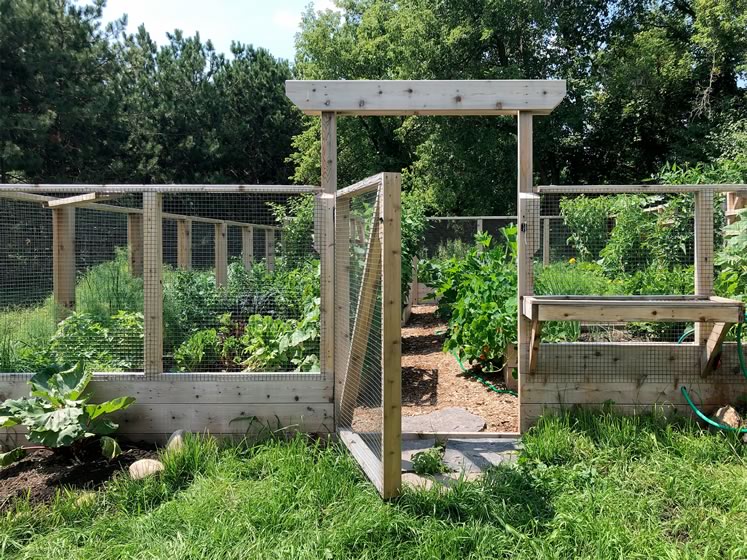
Mark Gorski of Erin’s Gourmet Garden Organics designed this fenced-in vegetable garden around raised beds and walkways covered in wood chips. Photo courtesy Mark Gorski.
And Gorski has another garden hack he says works well. “Dog hair is a natural repellent for four-legged garden pests. I put a small amount around plants and the scent drives animals away. It’s compostable and you can fold it into the soil when it’s done its job. Contact a local dog groomer and pick up a bag for free.”
Now, your success will also rely on factors you can’t control, most notably, the weather. But Quinton says it’s important to celebrate your wins, no matter how small they are, then tweak your plan for ways to enhance your success the next season. “Every year I try something new and aim to get a variety of veggies, colours and heights established,” she says. “As most gardeners will attest, growing your own produce is rewarding, but it’s also a bit of a trial by fire in terms of learning and making the most out of everything you grow.”
Need help?
Visit these local experts for workshops, social media tips or professional help.
Related Stories
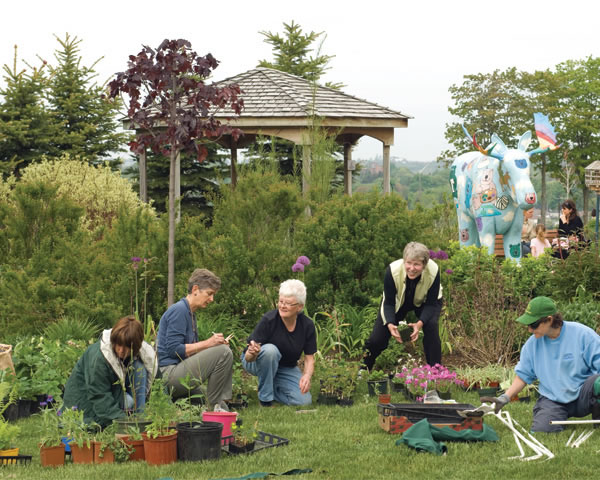
Healing Gardens
Jun 20, 2008 | | LeisureA group of extraordinary gardeners have created a natural balm for Headwaters patients.

An Exurbanite’s Guide to Field Crops
Sep 24, 2021 | | FarmingA drive-by primer on what’s growing in Headwaters.
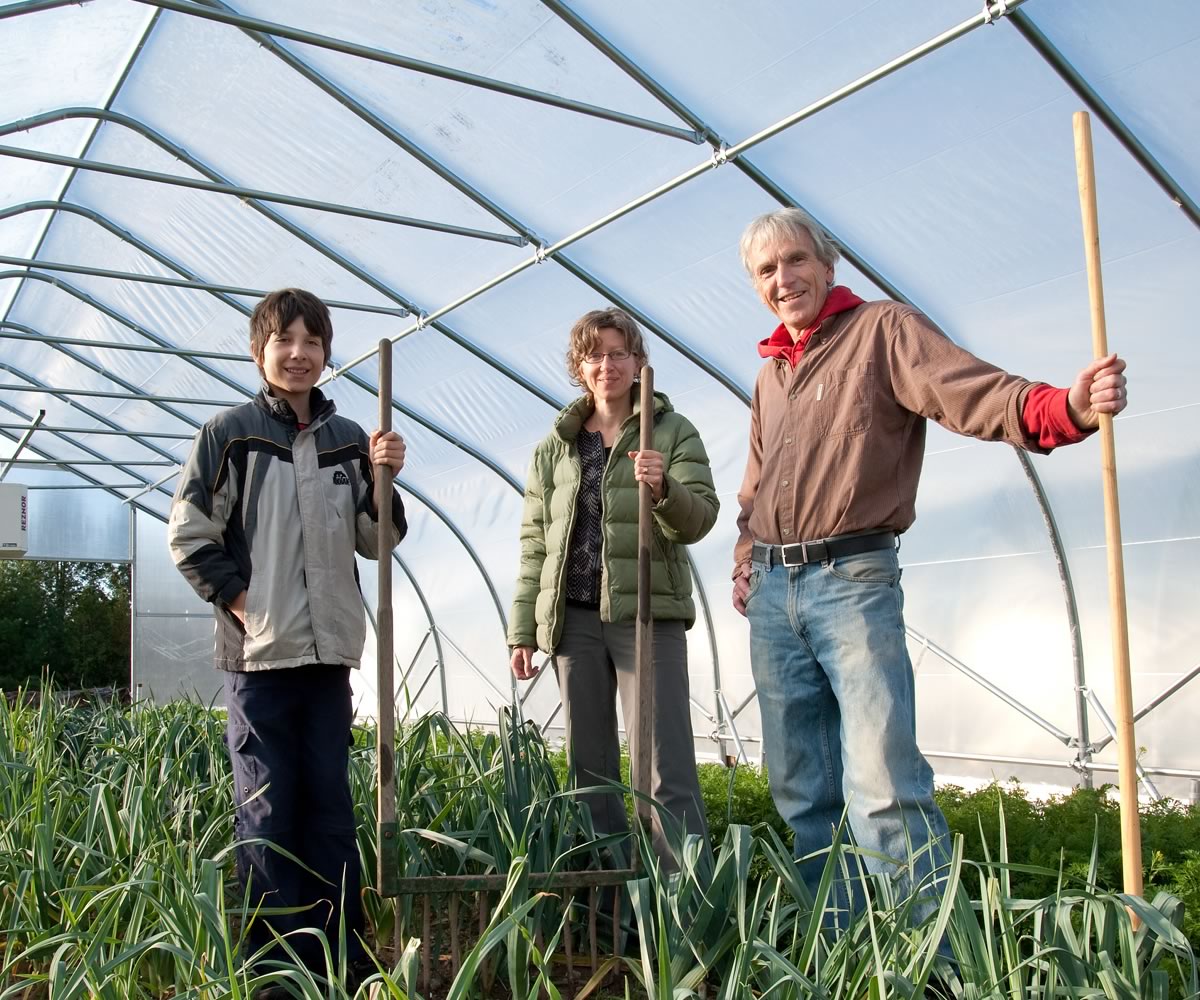
Am Braigh Farm: Farming on the Back Side of the Calendar
Nov 17, 2012 | | Homegrown in the HillsJamie bought Am Braigh’s three acres and broken-down old farmhouse in 1992. His aunt came up with the name, which is Gaelic for “higher ground,” relating both to his property and his spiritual leanings.
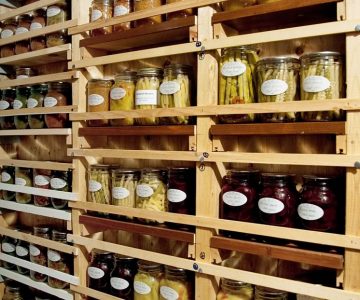
From Soil to Table
Sep 18, 2020 | | FarmingVegetable grower extraordinaire Karen Hollingshead uses galvanized steel raised beds and water troughs to hold her 35 varieties of tomatoes and other gems.
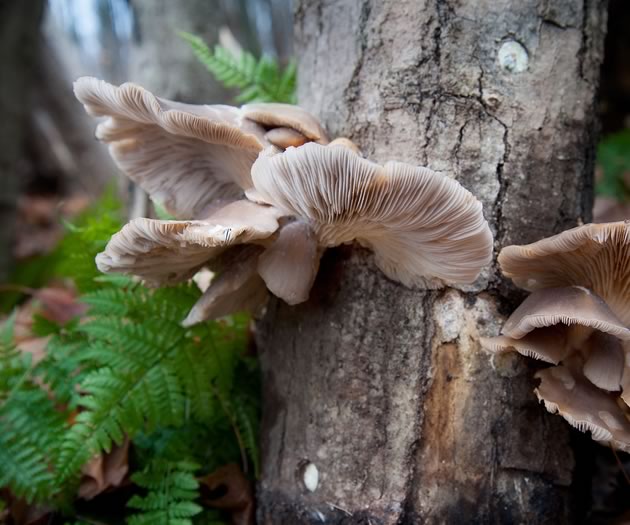
How to Grow Mushrooms
Jun 20, 2016 | | FarmingNot in a hurry? Growing your own mushrooms might be for you.
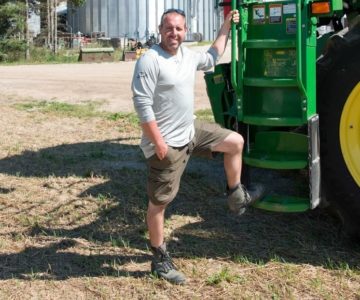
Meet the Farmers
Sep 24, 2021 | | FarmingBert Tupling, Mike Swidersky and Darryl Burnett criss-cross Dufferin County tending to wheat, barley, corn, potatoes, cattle, sheep and more.
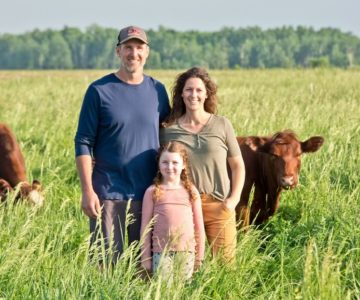
Regenerative Agriculture Puts the Soil First
Jun 22, 2021 | | FarmingHow cover crops, crop rotation and using livestock to fertilize fields puts local farmers on the front lines in reducing climate change.

The Boom in Local Food
Jun 25, 2020 | | FoodIn the dark cloud of the pandemic, a silver lining for small farmers.
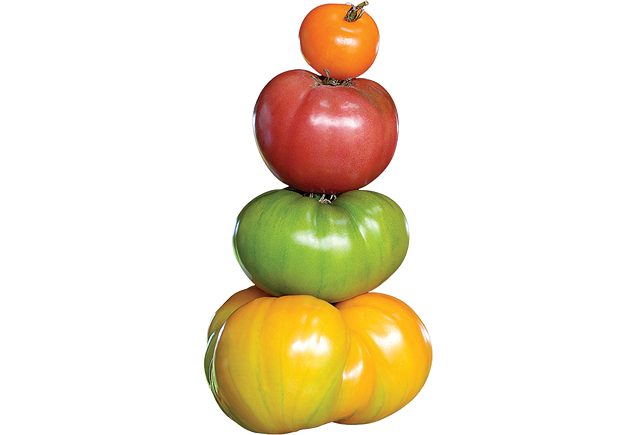
The Heirloom Tomato Club
May 18, 2012 | | FarmingHow a couple of avid tomato lovers are helping preserve the amazing variety of their favourite heritage fruit.







